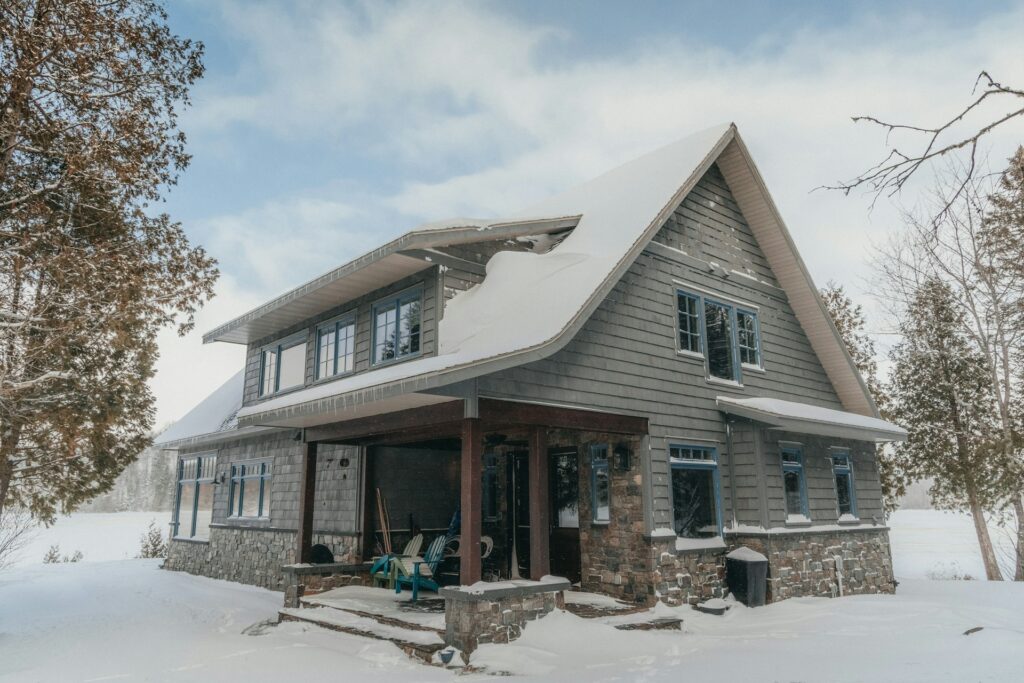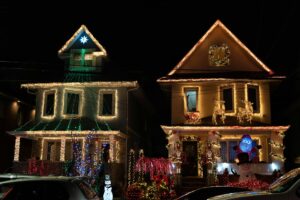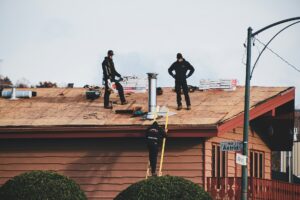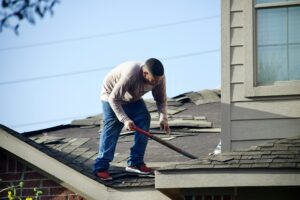Oregon and Washington homeowners understand the Pacific Northwest’s unique challenges all too well. Intense rainfall, high humidity, and sporadic windstorms can wreak havoc on exterior materials that aren’t specifically designed to endure moisture and wear. This environment calls for high-quality siding that goes beyond looks to protect your home for decades
Choosing the right product can feel daunting when you’re faced with so many options. But by focusing on the region’s particular climate, durability requirements, and installation expertise, you can find a siding solution that will enhance your home’s beauty while standing strong against the elements. Below, you’ll discover how to identify the best siding for the PNW climate, the necessary installation practices to keep it secure, and how to ensure seamless performance in the years ahead
Ready to choose the perfect siding for your Pacific Northwest home? Contact HOMEMASTERS today for your free siding consultation and material recommendations tailored to your local climate.
Understanding PNW Weather
The Pacific Northwest is known for its lush forests, dramatic coastlines, and fertile valleys. But living amidst natural beauty also means contending with persistent rain, cool winters, and sometimes unpredictable storms. These climate conditions create two key stress factors for your home exterior:
Moisture Infiltration Fluctuating Temperatures
Rain can sometimes drive sideways in coastal or windy areas, seeping into gaps if siding isn’t sealed or constructed properly. Meanwhile, afternoon sunshine alternating with evening chills can cause repeated expansion and contraction. These forces work together to break down ill-fitted siding. When you’re exploring siding replacement in WA or new siding installation in Oregon, think about how well each material handles moisture, temperature shifts, and occasional gale-force winds
Fiber Cement for Long-Term Performance
Over the years, fiber cement has emerged as a leading contender for best siding for PNW climate challenges. Made from wood pulp, cement, sand, and other eco-friendly additives, fiber cement boards resist water and rot while mimicking the classic look of painted wood
Fiber cement siding stands out for three primary reasons:
- Moisture Resistance: Its composition naturally blocks water infiltration, reducing the risk of mold or mildew
- Dimensional Stability: Designed to handle extreme temperature swings without warping or shrinking
- Versatile Appearance: Offered in a range of textures, from smooth modern panels to wood-grain styles
Brands like James Hardie have built a solid reputation for fiber cement products designed specifically for wet climates. According to the Siding Contractors Association, fiber cement performs exceptionally well in high-moisture environments. HOMEMASTERS specializes in James Hardie installations, ensuring that the siding remains dimensionally stable, even in areas with consistent drizzle
Vinyl Siding’s Budget-Friendly Appeal
Vinyl siding remains a popular choice for homeowners seeking a balance of affordability and low maintenance. Its plastic-based composition offers resistance to rotting, peeling, and insect damage. In rainy or coastal areas, vinyl presents several advantages:
- Water Repellent: Vinyl does not absorb water, which reduces the likelihood of warping or mold
- Low Maintenance: You can typically clean vinyl with a garden hose and a mild detergent once or twice a year
- Wide Range of Colors: Modern vinyl products come in various tones that resist fading under UV exposure
However, it is crucial to hire a professional who understands proper fastener spacing and the importance of leaving room for expansion. Improperly installed vinyl can lead to buckling or allow moisture behind the surface. If you’re weighing siding installation in Oregon with a modest budget in mind, vinyl might prove a practical option
Cedar Wood for Timeless Warmth
In many Pacific Northwest neighborhoods, cedar shingles and clapboards have become a signature style. Cedar offers a natural, rustic beauty that seamlessly complements the region’s wooded landscapes. When properly maintained, cedar siding can last for decades, but it does demand extra attention:
- Regular Sealing or Staining: Moisture protection treatments must be reapplied every few years to prevent rot
- Vigilant Inspections: Wood is a prime target for wood-boring insects. Monitoring and early treatment are crucial
- Natural Insulation: Real wood helps insulate a home, reducing energy costs in colder seasons
Many homeowners choose cedar for its authentic, textured appearance. That said, if consistent maintenance feels overwhelming, a lower-maintenance material like engineered wood or fiber cement might offer a more care-free alternative
Engineered Wood and Composite Options
Engineered wood siding combines the visual charm of real wood with added moisture and impact resistance. Manufacturers bond wood fibers with resin or synthetic resins to create a product that resists splitting and decay. Composite siding, which may include wood fibers, plastics, or cement-based elements, also aims to improve performance while retaining a natural look. These cutting-edge materials have grown increasingly popular in siding replacement WA projects thanks to:
- Greater Stability: Engineered wood expands less than solid wood, making it more tolerant of fluctuating weather
- Mold Resistance: Most composite products are specifically treated to repel mold and mildew
- Easy Installation: Typically lighter and more uniform, which can simplify a contractor’s job
Even these advanced options still benefit from an occasional check-up, especially around seams and endlaps, to confirm proper sealing remains intact over time
Shielding Against Moisture
Moisture penetration is the enemy of all siding. Even the best materials will underperform if not paired with proper weather barriers, flashing, and drainage systems. Here are some elements every homeowner should pay attention to:
- House Wrap: A waterproof layer installed beneath the siding, designed to repel water while allowing internal moisture vapor to escape
- Flashing: Thin sheets of metal or other waterproof material placed around windows, doors, and roof intersections to direct water away
- Proper Sealing: Caulk or silicone seals for cracks and joints to prevent water intrusion
In the Pacific Northwest, well-installed flashing, along with a reliable house wrap, can make the difference between healthy siding and a hidden moisture problem that leads to rot or interior damage. The International Building Code sets national standards for proper installation, and choosing a contractor like HOMEMASTERS who is well-versed in local rules ensures that your siding meets or exceeds legal standards
Professional Installation in Oregon and Washington
Siding in a temperate rainforest climate requires more than just picking the right material, it demands a meticulous installation to outsmart water penetration and temperature swings. Whether you’re looking at fiber cement, vinyl, cedar, or any composite material, investing in professional craftsmanship prevents:
- Improper Sealing: Gaps may allow water in, leading to rot and mold
- Early Failures: Warping or loosening can occur if nails or fasteners are not placed according to guidelines
- Hidden Damage: An experienced installer can spot areas of your home’s exterior that need repair before new siding goes on
If you need siding installation in Oregon or siding replacement in WA, look for a fully licensed and insured contractor with in-depth experience in your county. HOMEMASTERS understands the unique weather patterns, building codes, and architectural preferences throughout the Pacific Northwest. Our on-site evaluations often uncover hidden problems, such as poorly ventilated eaves or failing flashing, and address them before they become costly headaches
Real-World Example
Oregon coast homeowners who choose fiber cement siding over vinyl often find the higher initial investment pays off through improved performance and peace of mind. When HOMEMASTERS installs fiber cement with proper house wrap and special flashing tape around windows, with fasteners spaced precisely according to manufacturer guidelines, the siding can expand and contract without buckling
Homeowners typically notice decreased energy bills during damp winter months and observe no signs of mildew on the siding. The fresh exterior revives curb appeal, with modern lines that can complement coastal-inspired color palettes
Maintenance for Longevity
After selecting and installing your siding, you’ll want to keep it in top shape with a few straightforward strategies:
- Seasonal Checks: Twice a year, walk around the exterior to look for cracked caulk, chipped paint, or visible damage
- Prompt Repairs: If you spot an issue, address it quickly to prevent water from penetrating
- Routine Cleaning: Gentle washing once a year can remove grime, moss, and mildew. A mild soap solution and soft brush typically work well
- Reapplication of Stain or Sealant: If you choose wood-based siding, follow a recommended schedule to maintain its water-resistant barrier
By combining a durable material with proactive maintenance, you reduce the likelihood of costly repairs and extend your siding’s life. Plus, a well-maintained exterior retains a higher resale value, an important factor if you ever plan to sell your home
Boosting Energy Efficiency
Siding isn’t just about protection and appearance. It also plays a pivotal role in your home’s insulation. Along with proper caulking and underlayment, the right siding can stabilize indoor temperatures and conserve energy. If you’re replacing older siding, you might consult a professional on insulating underlayment or using energy-efficient building elements as part of the installation process. This can especially help in mountainous OR or WA communities where winter temperatures dip significantly during the rainy season
Environmental Considerations
Many homeowners today are drawn to products that lessen ecological impact. Fortunately, there are ways to choose environmentally conscious siding:
- Recycled Content: Some composite sidings incorporate reclaimed wood fibers or plastics diverted from landfills
- Longevity: Siding that doesn’t require frequent replacement is inherently better for the environment
- Low-VOC Finishes: Look for products using low-volatile organic compound coatings to minimize harmful emissions
Fiber cement, for example, is often touted as an eco-friendly choice because of its durability and the abundance of raw materials used in manufacturing. Meanwhile, cedar or sustainably harvested wood can fit homeowners aiming for a more traditional approach if they’re mindful about responsibly sourced lumber
The Importance of a Free Inspection
Sometimes, the full extent of damage to your siding isn’t obvious until a trained eye inspects it. A free siding inspection offers insight into potential problem areas, like hidden rot or improperly installed flashing. During this consultation, HOMEMASTERS can help you compare possible materials and determine any energy-saving opportunities. It’s a low-risk way to understand your home’s unique needs before making a final decision
Conclusion
In the end, a reliable home exterior in Oregon or Washington depends on choosing siding that can outlast moisture, wind, and fluctuating temperatures. Whether fiber cement, vinyl, cedar, or a composite product best suits your lifestyle and design goals, keep local climate and building codes at the forefront. Invest in professional installation so you consistently outmaneuver the Pacific Northwest elements
Once installed, keep it in prime condition by performing regular maintenance and dealing with minor issues quickly. Over time, these practices will preserve your home’s comfort, energy efficiency, and curb appeal, even on the mistiest of mornings
Ready to protect your home with the best siding for the Pacific Northwest climate? Contact HOMEMASTERS today for your free siding inspection and personalized quote.
Our expert team will guide you through material selection, installation, and long-term maintenance to ensure your home stays beautiful and protected against the elements for years to come.




